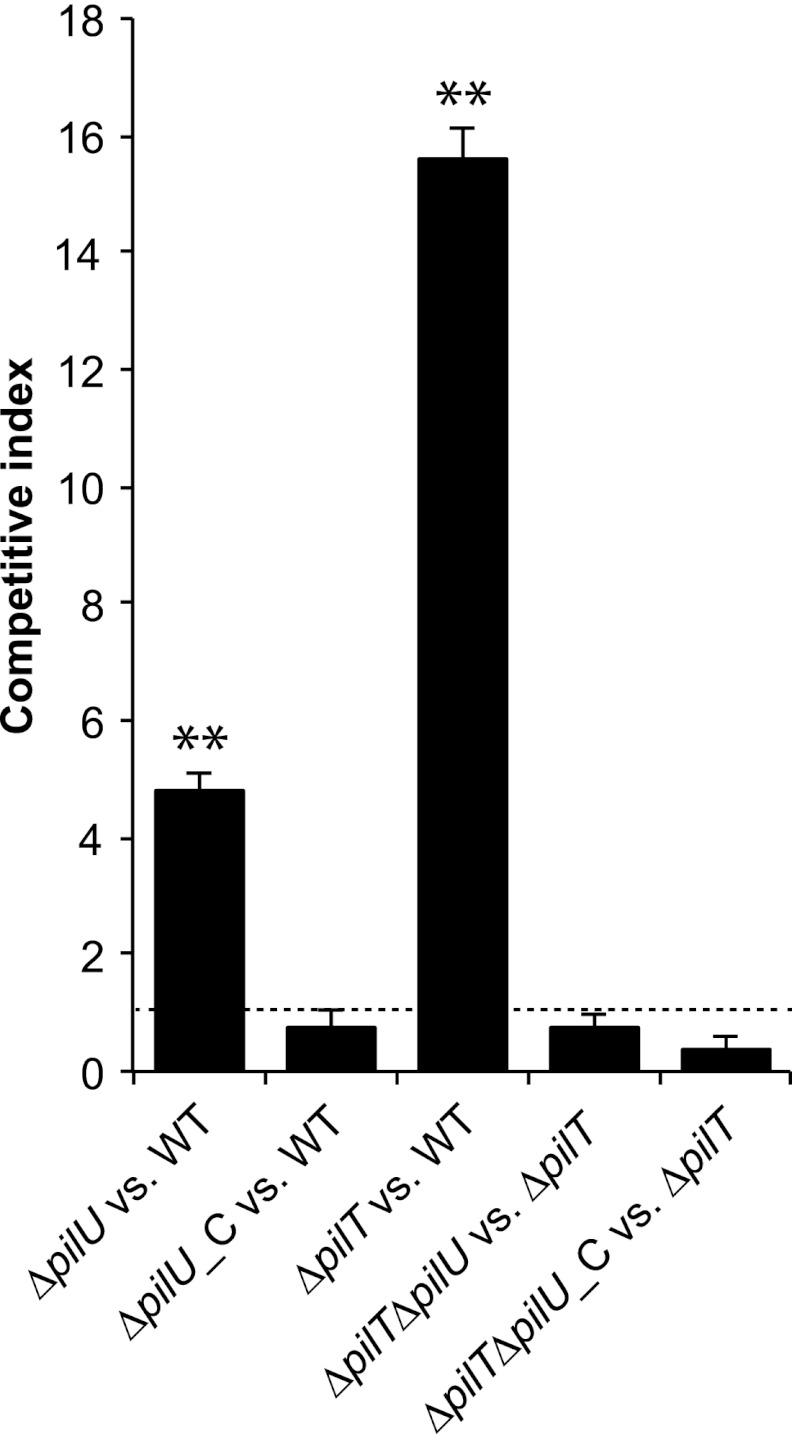Fig 1.
A pilU mutant outcompetes wild-type FAM20 in a competitive adhesion assay. The assay was performed using wild-type FAM20 (WT), a pilU mutant (ΔpilU), a complemented pilU mutant (ΔpilU_C), a pilT mutant (ΔpilT), a pilU pilT double mutant (ΔpilT ΔpilU), and the double mutant complemented with pilU (ΔpilT ΔpilU_C). Mutant and wild-type bacteria were mixed at a 1:1 ratio as determined by the OD600 and viable counts. The bacterial mixture was immediately added to FaDu cells (total MOI = 100) and allowed to adhere for 2 h in a standard adhesion assay. The competitive index denotes the relative amounts of mutants adherent to cells as determined by plating on both selective and nonselective media. The dashed line indicates a competitive index of 1, i.e., no difference in adhesion. Error bars indicate standard deviations, and asterisks denote statistically significant differences from a CI of 1 (P < 0.001; paired t test).

